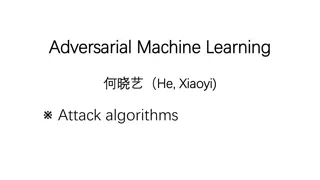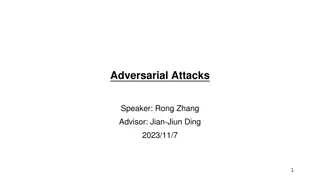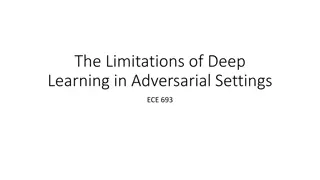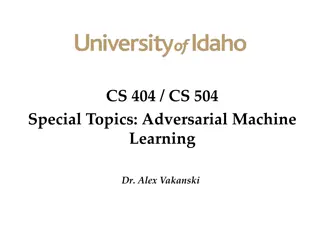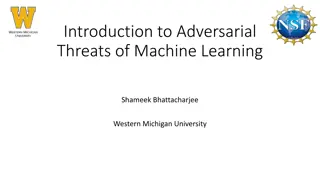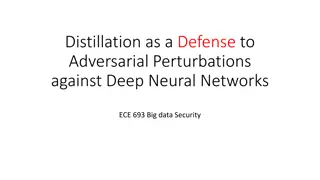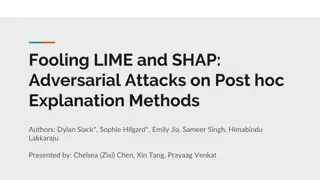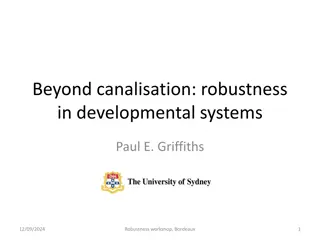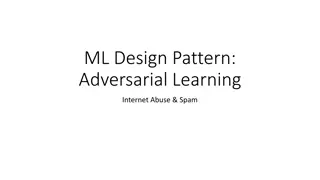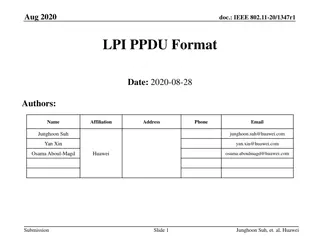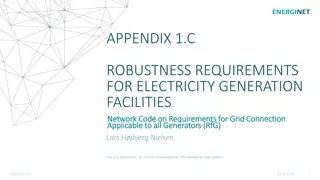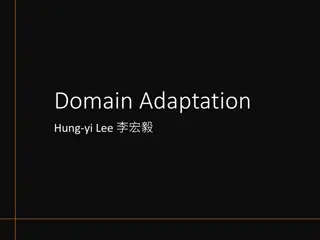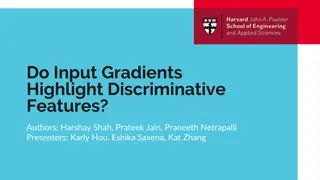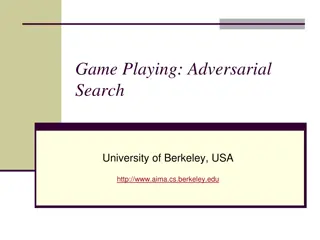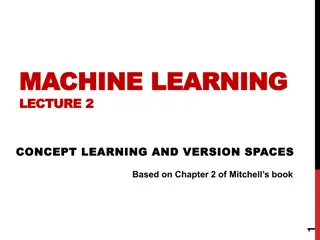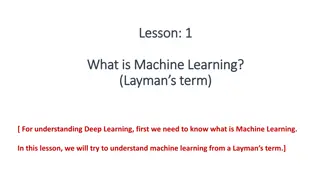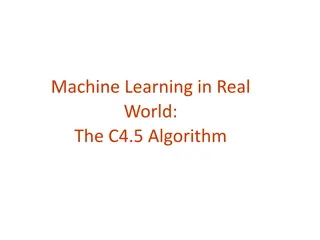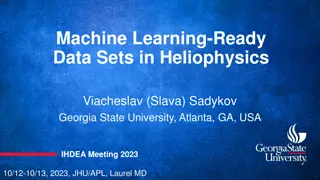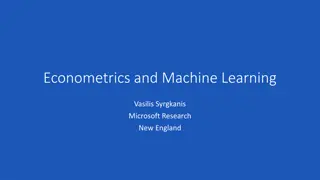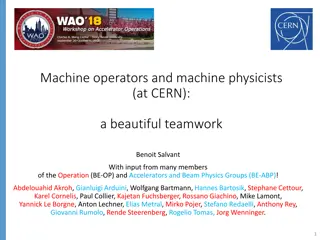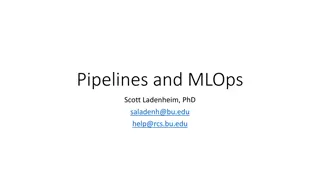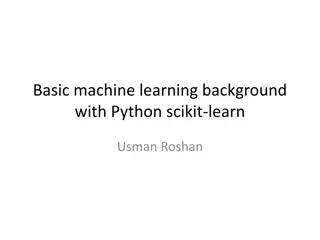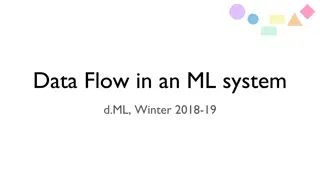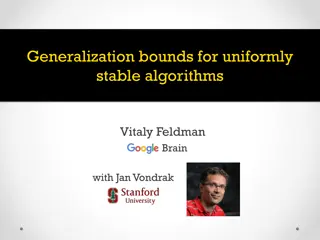Understanding Robustness to Adversarial Examples in Machine Learning
Explore the vulnerability of machine learning models to adversarial examples, including speculative explanations and the importance of linear behavior. Learn about fast gradient sign methods, adversarial training of deep networks, and overcoming vulnerabilities. Discover how linear perturbations impact non-linear models and the implications for logistic regression.
Download Presentation

Please find below an Image/Link to download the presentation.
The content on the website is provided AS IS for your information and personal use only. It may not be sold, licensed, or shared on other websites without obtaining consent from the author. Download presentation by click this link. If you encounter any issues during the download, it is possible that the publisher has removed the file from their server.
E N D
Presentation Transcript
Robustness to Adversarial Examples Presenters: Pooja Harekoppa, Daniel Friedman
Explaining and Harnessing Adversarial Examples Ian J. Goodfellow, Jonathon Shlens and Christian Szegedy Google Inc., Mountain View, CA
Highlights Adversarial examples: speculative explanations Flaws in the linear nature of models Fast gradient sign method Adversarial training of deep networks Why adversarial examples generalize? Alternate Hypothesis
Introduction Szegedy et al. (2014b) : Vulnerability of machine learning models to adversarial examples A wide variety of models with different architectures trained on different subsets of the training data misclassify the same adversarial example fundamental blind spots in training algorithms? Speculative explanations: Extreme non linearity Insufficient model averaging and insufficient regularization Linear behavior - real culprit!
Linear explanation of adversarial examples Activations grow linearly!
Linear perturbation of non-linear models ReLUs, maxout networks etc. - easier to optimize linear networks Fast gradient sign method Image from reference paper
Fast gradient sign logistic regression 1.6% error rate 99% error rate Image from reference paper
Adversarial training of deep networks Deep networks are vulnerable to adversarial examples - Misguided assumption How to overcome this? Training with an adversarial objective function based on the fast gradient sign method Error rate reduced from 0.94% to 0.84%
Different kinds of model capacity Low capacity unable to make many different confident predictions? Incorrect. RBF can. RBF networks are naturally immune to adversarial examples low confidence when they are fooled RBF network Shallow RBF network with no hidden layer: Error rate of 55.4% on MNIST Confidence on mistaken examples is only 1.2% Drawback: Not invariant to any significant transformations so they cannot generalize very well
Why do adversarial examples generalize? Image from reference paper
Alternate Hypothesis Generative training MP-DBM: of 0.25, error rate of 97.5% on adversarial examples generated from the MNIST Being generative alone is not sufficient Ensemble training Ensemble of 12 maxout networks on MNIST: of 0.25, 91.1% error on adversarial examples on MNIST One member of the ensemble: 87.9% error
Summary Adversarial examples are a result of models being too linear Generalization of adversarial examples across different models occurs as a result of adversarial perturbations being highly aligned with the weight vector The direction of perturbation rather than space matters the most Introduces fast methods of generating adversarial examples Adversarial training can result in regularization Models easy to optimize are easy to perturb
Summary Linear models lack the capacity to resist adversarial perturbation; only structures with a hidden layer can RBF networks are resistant to adversarial examples Models trained to model the input distribution are not resistant to adversarial examples. Ensembles are not resistant to adversarial examples
Robustness and Regularization of Support Vector Machines H. Xu, C. Caramanis, S. Mannor McGill University, UT Austin
Key Results The standard norm-regularized SVM classifier is the solution to a robust classification setup Norm-based regularization builds in a robustness to certain types of sample noise These results hold for kernelized SVMs if we have a certain bound
Kernelization If we have so f non-decreasing with the following: If x and x fall within rho of each other, then
Further Work Performance gains possible when noise does not have such characteristics
Towards Deep Neural Network Architectures Robust to Adversarial Examples Shixiang Gu and Luca Rigazio Panasonic Silicon Valley Laboratory, Panasonic R&D Company of America
Highlights Pre-processing and training strategies to improve the robustness of DNNs Corrupting with additional noise and preprocessing with Denoising Autoencoders (DAEs) Stacking with DNN makes the network even more weak to adversarial examples Neural network s sensitivity to adversarial examples is more related to intrinsic deficiencies in the training procedure and objective function than to model topology The crux of the problem is then to come up with an appropriate training procedure and objective function Deep Contractive Network (DCN)
Noise Injection Gaussian Additive Noise Plot from reference paper
Noise Injection Gaussian Blurring Table from reference paper
Conclusion Neither Gaussian additive noises or blurring is effective in removing enough noise such that its error on adversarial examples could match that of the error on clean data.
Deep Contractive Network Contractive autoencoder (CAE) A variant of AE with additional penalty for minimizing the squared norm of the Jacobian of the hidden representation with respect to input data
Deep Contractive Networks DCN is a generalization of the contractive autoencoder (CAE) to a feed-forward neural network
Results Table from reference paper
Discussions and Future work DCNs can Successfully be trained to propagate contractivity around the input data through the deep architecture without significant loss in final accuracies Future work Evaluate the performance loss due to layer-wise penalties Exploring non-Euclidean adversarial examples
Generative Adversarial Nets Goodfellow et al. Department d informatique et recherche operationnelle, Universite de Montreal
Summary A generative model is pitter against an adversary: a discriminative model that learns to determine whether a sample is from the model distribution or the data distribution. Generative model=team of counterfeiters and discriminative model=police
Description G, the generative model, is a multilayer perceptron with some prior input noise with tunable parameter g D, the discriminative model, is a multilayer perceptron that represents the probability of some x coming from the data distribution rather than the generative model.
Minimax Game Plots from the reference paper
Main Theoretical Result If trained using stochastic gradient descent with sufficiently small updates then the generative distribution approaches the data distribution
Discussion and Further Work Computationally advantageous as the generator network is updated only from gradients from the discriminator No explicit representation for the generative distribution Temperamental to how D and G are synchronized Further work: Condition generative model/better methods coordinating training of D and G.


